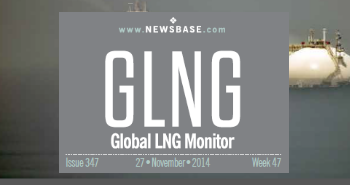Canadian government invests CAD200mn in Cedar LNG Project

Government financing comes as project has seen its price tag almost double to CAD5.9bn
WHAT: Ottawa has agreed to provide CAD200mn in financing for the floating LNG project in British Columbia.
WHY: The project has been granted fast track status by government officials given its ability to help reduce the threat of tariffs posed by the US.
WHAT NEXT: Pipeline construction is expected to begin in the second quarter of 2025. The facility is scheduled to begin exporting cargoes in 2028.
Cedar LNG, a joint venture between Pembina Pipeline and the Haisla Nation has been granted CAD200mn ($138mn) in financing from the Canadian government under its Strategic Innovation Fund (SIF), Mark Carney’s administration announced on March 21.
The financing commitment marks a key milestone for the project located on British Columbia’s north coast, as the project has been hit with skyrocketing costs that have seen the estimated price tag for the facility balloon from CAD3bn ($2.1bn) to CAD5.9bn ($4.1bn).
Inflationary pressures on materials and global supply chain disruption have hit the industry hard in recent years. Projects in the US Gulf Coast, such as Venture Global’s Plaquemines LNG plant and ExxonMobil and QatarEnergy’s joint venture Golden Pass LNG, have also grappled with cost overruns.
Cedar LNG received a positive final investment decision (FID) in June 2024. Marine terminal and pipeline right-of-way clearing are now approaching completion. Construction of the marine terminal itself and its pipeline is forecast to begin in the second quarter of 2025.
South Korean company Samsung Heavy Industries is working with US engineering firm Black & Veatch to design and construct the floating LNG (FLNG) vessel at its shipyard in Geoje, South Korea.
The FLNG terminal will boast a production capacity of 3.3mn tonnes per year (tpy) and is expected to come online in 2028 and will be moored at the port of Kitimat, which is located about 700 km north of Vancouver. Kitimat will also host the country’s flagship LNG project, the Shell-operated LNG Canada, which is expected to begin shipping cargoes this summer.
Upon completion, the project will be Canada’s first indigenous majority-owned LNG plant. Another proposed facility in British Columbia, the Ksi Lisims LNG project is partially indigenous-owned and is currently undergoing environmental assessment, with the possibility of construction beginning later in 2025. If a positive FID and regulatory approvals are granted, the facility could come online in 2029.
Cedar LNG will source its natural gas from the Coastal GasLink pipeline, which runs 670 km across British Columbia from the Montney shale formation near Dawson Creek to Kitimat.
Canada has set some of the most stringent environmental regulations for its LNG projects and Cedar LNG has aspirations to be one of the lowest emitting LNG plants in the world. The facility will be powered by renewable electricity from BC Hydro, which will enable it to possess one of the lowest carbon intensities among LNG facilities worldwide.
Cedar LNG also finds itself well positioned geographically on Canada’s west coast to offer a direct shipping route to key Asian importers, most notably Japan and South Korea, the world’s second and third biggest LNG importers.
The route avoids pricy canal fees and delays, as is the case for US Gulf Coast projects, and also is free of geopolitical unrest which has affected companies such as QatarEnergy when trying to ship cargoes through the Red Sea with Houthi militias wreaking havoc on tankers attempting to pass.
Moreover, both Japan and South Korea are pushing to phase out coal as part of their energy transition and have the ultimate goal of reaching net zero by 2050. Tokyo is targeting a complete phase out of coal by 2035, while Seoul has its sight set on reducing coal use by over 75% by 2039.
Indeed, LNG from an ally in Canada, produced under stringent environmental regulations, serves as a natural solution to displacing coal use for the two northeast Asian countries as they continue their decarbonisation journey.
Meanwhile for Canada, the project represents another move to diversify its trade relations and open up more export markets to its projects as it finds itself in the midst of a messy trade war initiated by US President Donald Trump.
With the US threatening to increase tariffs on a plethora of Canadian products and natural resources, Cedar LNG is one of 18 natural resource projects that have been flagged by the British Columbian government to be fast-tracked to lessen the burden of tariffs threats that Washington is levying.
Certainly, Canada is now in the midst of a pivot on its approach to exploiting its natural resources. In April 2024, Energy and Natural Resources Minister Jonathan Wilkinson told Canadian network CTV that "the government is opposed to using government money to fund inefficient fossil fuel subsidies... We are not interested in investing in LNG facilities.”
In his first move since taking over from Justin Trudeau as Prime Minister, Mark Carney moved to abolish Canada’s consumer carbon tax earlier in March in another sign that the Liberal government is keen to take a business-friendly approach to its natural resources.
Canada is set to go to the polls on April 28. The ruling Liberal Party is currently neck-and-neck with the Conservative Party, which has not been shy in expressing its view that the world needs Canadian LNG.
Regardless of what happens on April 28, all signs point to more government funding pouring in for Canada’s prospective LNG projects as the country seeks to rewrite its trade relations under the threat of steep tariffs from its most important trade partner.



Follow us online